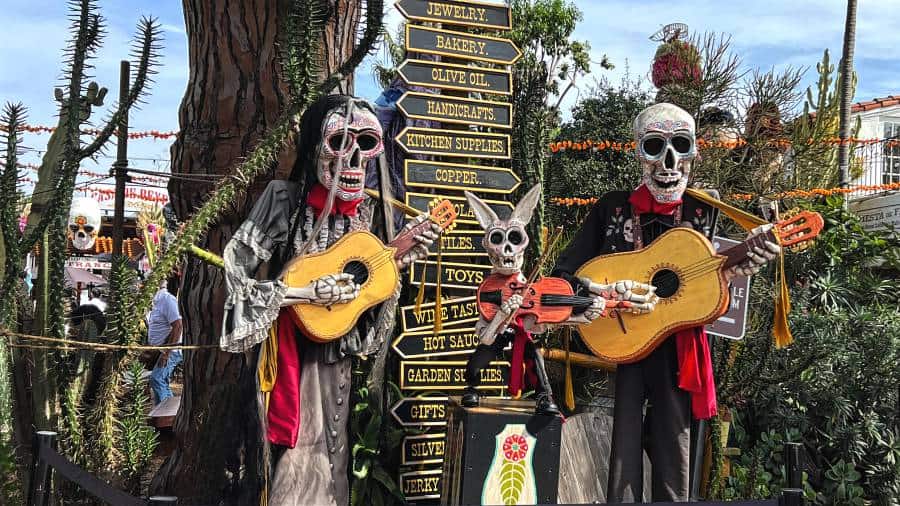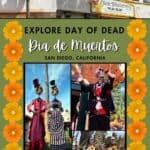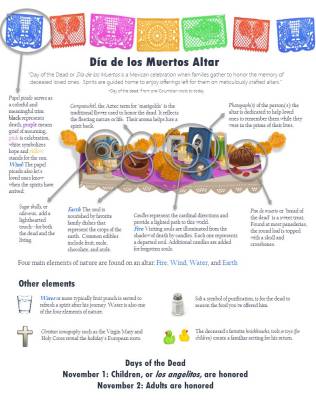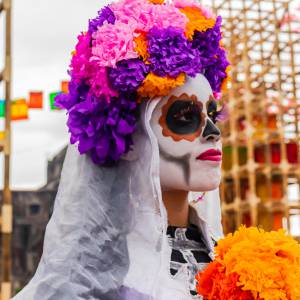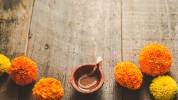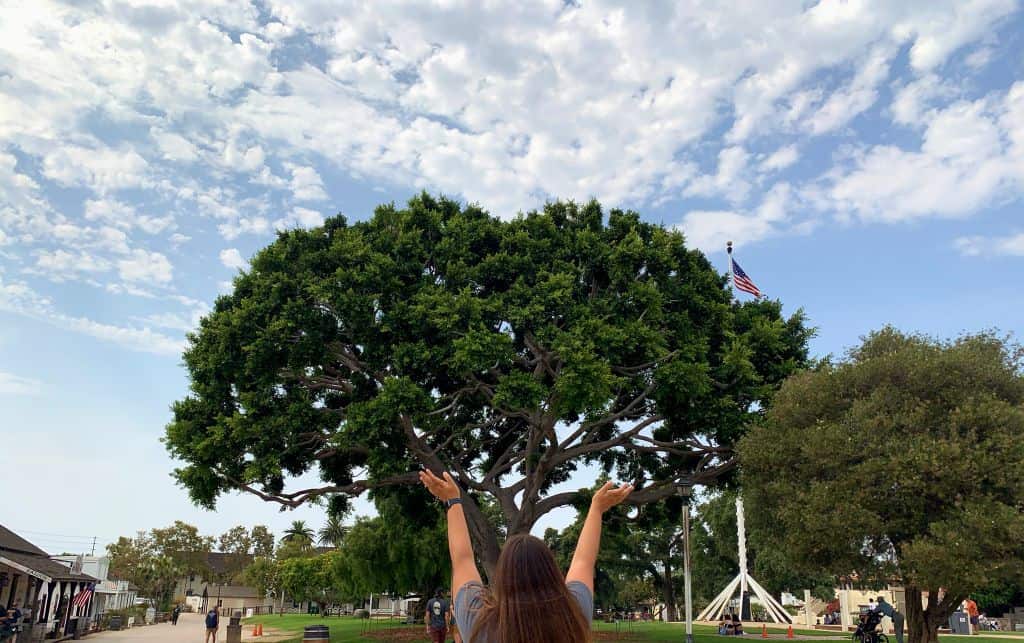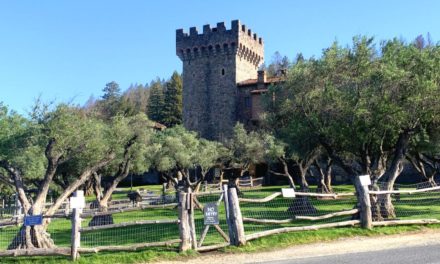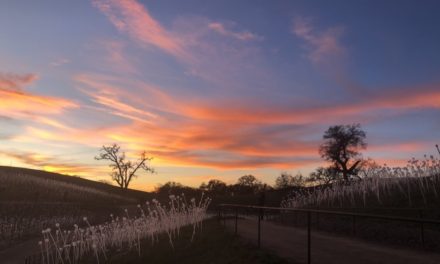Explore the Day of the Dead Mexican traditions that are truly festive with joyous music and beautiful decorations centered on family.
**Disclaimer** The businesses or resources mentioned are not affiliated with Savvy Cali Girl and we have not received any compensation, unless noted within the blog post itself. They are simply helpful resources our Savvy Cali Girl contributors have deemed worthy of a shout out. In addition, all images are the property of the Savvy Cali Girl Blog unless otherwise noted.
Why the Day of the Dead Is About Family
Have you ever wondered about the vibrant and celebratory side of the Day of the Dead that often goes unnoticed? Beyond the somber imagery and haunting tales, lies a world of exuberant festivities, lively music, and heartfelt gatherings. Día de Muertos celebrations foster unity, love, and reverence for departed loved ones.
Break the taboo and explore the joyous side of this extraordinary Mexican tradition. Delve into the festive spirit of the Day of the Dead and embrace the joyful music and dance that accompany the celebrations. Discover the colorful ofrendas that illuminate the beauty of family, sugar skulls, skeletons, and marigolds. Uncover the joy within the Day of the Dead and find inspiration to honor and celebrate the lives of those who have passed. Embrace love, unity, and remembrance, and immerse yourselves in the rich traditions of Dia De Muertos.
Creating Colorful Ofrendas: Beyond the Somber
One of the most captivating aspects of the Day of the Dead celebration is the creation of colorful ofrendas, which go far beyond the somber nature often associated with losing loved ones. These artistic altars serve as a means of honoring and remembering loved ones who have passed away. They also embrace the vibrant spirit and joyousness associated with this time of year. Another aspect created within the ofrendas is the representation of all four elements: earth, wind, fire, and water. CalPoly Pomona did a nice, simple write-up of the elements of an ofrenda.
The ofrendas are meticulously crafted, each element carefully chosen to symbolize a particular sentiment or memory. Brightly colored papel picado hangs delicately in the air, its intricate patterns dancing in the breeze. Fragrant marigolds, known as the “flowers of the dead,” are thoughtfully placed, their vibrant orange petals symbolizing the fragility of life and the beauty that can be found even in the midst of loss.
Not limited to flowers and decorative paper, the ofrendas also feature an array of personal items that hold special meaning. Photographs of the departed are displayed prominently, capturing their essence and preserving their memory for generations to come. Favorite foods and drinks are lovingly prepared and placed on the altar, inviting the spirits to partake in the pleasures of life once again.

Creators of the ofrenda choose every element with intention. Each detail contributes to the overall narrative of remembrance and celebration. The use of bright colors, symbolic items, and intricate designs serve to capture the essence of the holiday and highlight the joyous side of the Day of the Dead.
Embracing Joyful Music and Dance
The Day of the Dead captures you with the infectious rhythm of the music and the mesmerizing movements of the traditional dances. As the music fills the air, people of all ages come together to partake in the traditional dances. Through dance, participants express their love, respect, and memories of those who have passed. It creates a powerful and emotional connection to the joyful spirit of the Day of the Dead.
Illuminating the Beauty of Sugar Skulls, Painted Skulls, Skeletons
Sugar skulls, or calaveras de azúcar, are a visually striking symbol of the Day of the Dead. These intricately decorated confections are made from sugar and molded into skull shapes. They are typically brightly colored and adorned with delicate icing designs. The artistry involved in creating sugar skulls is truly awe-inspiring. From the painstaking detailing to the vibrant hues, each skull is a unique work of edible art. These sweet treats not only serve as eye-catching decorations but also serve as offerings to honor the deceased. The significance lies in the belief in the sweetness of the skull. That sweetness helps to guide the souls of loved ones back to the realm of the living during the Day of the Dead festivities.
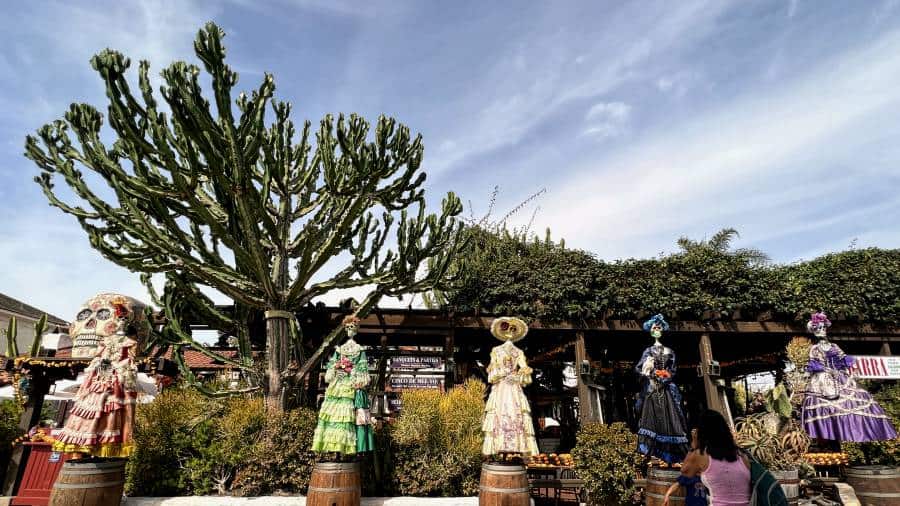
Skeletons also play a major part in community celebrations such as parades and decorated skeletons. It all takes place in public squares or on personal family altars at home or graveside. It’s all spectacular and a sight to behold! People celebrate by painting their faces with decorative skulls.
The costume aspect of the celebration is why I think many are misinformed that the Day of the Dead is a “Mexican Halloween”, and the fact they occur within days of each other.
Marigolds Are Traditional Blooms for the Day of the Dead
Marigolds, or cempasúchil as they are called in Mexico, play a significant role in the celebration of the Day of the Dead. These golden flowers have a strong scent that leads the spirits of the departed back to their loved ones. Their vibrant orange and yellow hues create a stunning contrast against the backdrop of the ofrendas and altars. Marigolds are often used to form intricate pathways or “carpetas” that lead the spirits from the cemetery to the home, where they are welcomed with open arms. The sight of these radiant flowers in full bloom is a testament to the beauty and vitality of life, even in the face of death.
The Meaning Behind the Pageantry
Sugar skulls, skeletons, and marigolds symbolize the duality of life and death. The beauty intertwines joy and sorrow in the most captivating manner. You are meant to believe that death is not the end. Rather, it’s a continuation of a cycle that should be honored and celebrated. Through their vibrant colors, intricate designs, and fragrant aromas, these elements bring a sense of life and vitality to the Day of the Dead, reminding us to cherish every moment we have with our loved ones.
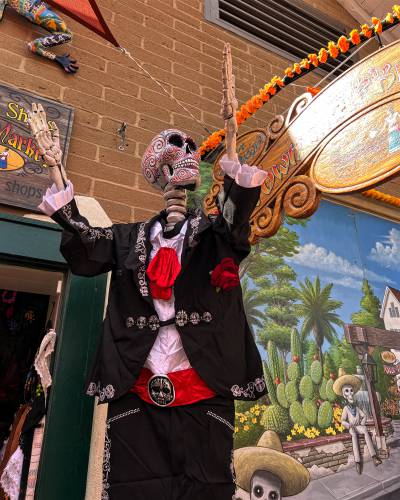
Dia De Muertos Is More Than A Single Day
Every region celebrates in its own unique way, but many have special days set aside for children, elder family members that have passed, and even their beloved pets. November 1st is reserved for the children while families honor the adults on November 2nd. While you may not be able to visit loved ones at their gravesites, you can always them with the ofrendas no matter where you are.
San Diego’s Month-Long Day of the Dead Celebrations
You may have noticed a number of the images in this post came from a single location. Why? It is an area of Southern California called Old Town San Diego. It admittedly is a tourist destination but man oh man do they deck out the shops and restaurants for the Day of the Dead! I am including a link to all of the other aspects of Old Town San Diego in case you want to check it out at any time of the year.
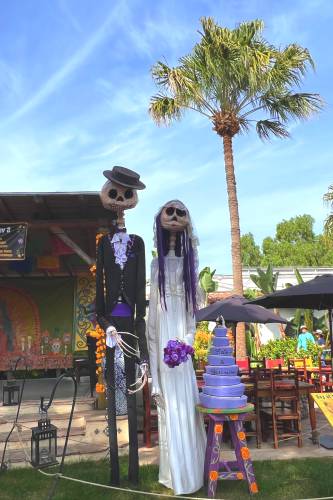
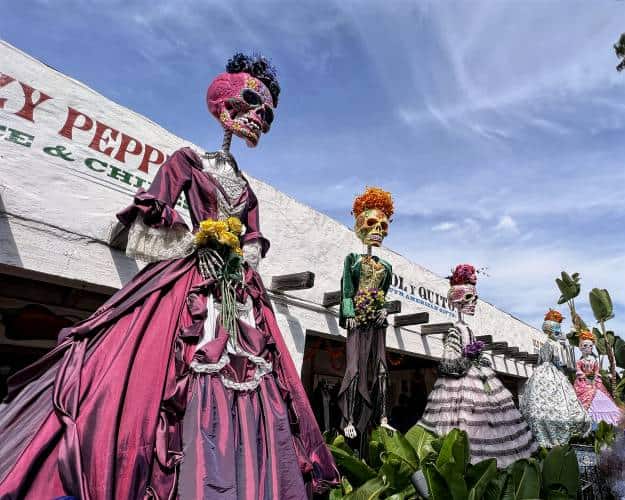
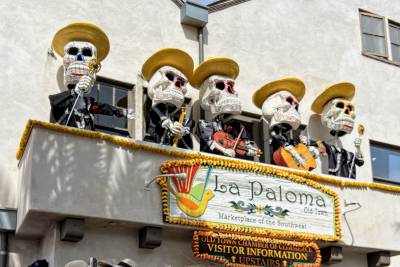
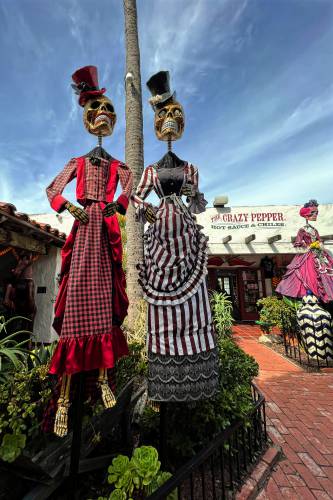
Barrio Logan’s Dia De Muertos Celebrations
Now, a major cultural hot spot for Chicano cultural events in San Diego is Barrio Logan. It is located under the iconic Coronado Bridge adjacent to Downtown San Diego and is a designated cultural district. The pillars are beautiful with murals with a small park surrounding those pillars.
This year, I was lucky enough to attend their annual Dia de Muertos with family and capture the magic of the day. This year’s theme in 2023, was Espiritu de Xochimilco. The area of Xochimilco, south of Mexico City was honored as a way to highlight the struggle to maintain cultural areas in the face of development pressures, just like in Barrio Logan where development pushes in from all sides.

